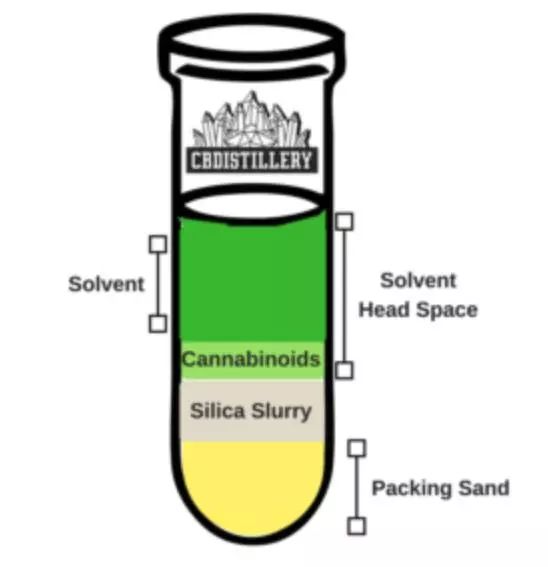- 翰林提供学术活动、国际课程、科研项目一站式留学背景提升服务!
- 400 888 0080
国际学校生物课也可以这么好玩!
◆ 6月10日,《Science》子刊发布了关于细胞在面临癌变危险时如何向身体发出警报的新见解,为寻找可能的治疗方法打开新的大门。英国剑桥癌症研究所名誉顾问、临床科学家Matthew Hoare博士说:“生命科学的发展永无止境,21世纪是生命科学发展的黄金时代。”可以说,未来人类社会的发展就是生命科学的发展。
On 10th June 2019, the Science series published new insights into how cells can alert our body when faced with cancerization, marking the new chance to the possible treatment for cancer. Dr Matthew Hoare, Clinician Scientist and Honorary Consultant of CRUK Cambridge Institute says that the development of Bioscience is an ongoing process, and the 21st century is the golden age for its development. That is to say, the development of our future society is the development of Bioscience.
科学探究社
the Scientific Research Club
为了不断激发更多青少年的科学热情,培养探索精神,苏州外国语学校相城校区国际高中部成立了科学探究社。
In order to inspire teenagers’ passion about science learning, and foster their spirit of inquiry at a younger age, the Scientific Research Club of the SCFLS Senior High School is thus established for our students.
科学探究成果展示
Scientific research
科学探究,是学生积极主动地获取知识、认识和解决问题的重要实践活动。它涉及提出问题、猜想与假设、制订计划、进行实验、收集证据、解释与结论、反思与评价、表达与交流等要素。
苏州外国语学校相城校区国际高中部科学探究社给学生制造了一个思考科学问题和解决科学问题的空间。
接下来,让我们走进科学实验室,看看他们的科学探究成果吧!
Scientific research is an important practice for students to initiatively acquire knowledge, identify and solve problems. This process involves the key elements such as “Defining Problem and Research, Hypothesis, Develop the Instrumentation Plan, Collect Data, Analyze and Draw Conclusions, Reflection and Evaluation, Expression and Communication”. Our Scientific Research Club allows the students to think about and solve some scientific problems. So now, let’s walk into the Science Laboratory to see how their research is going!
问题1:如何用简单的方法收集氧气?
Question 1: How to collect Oxygen in a simple way?
早在17世纪,科学家们就发现了光合作用的存在,而氧气便是光合作用的产物之一。刚刚学习过光合作用的同学们很快便想到了通过绿色叶片来获取氧气,但如何收集呢?起初这个问题难倒了好多同学,在经历了一次次的讨论和改进之后,他们终于如愿收集到满满一试管的氧气。
Early in the 17th century, the scientists have already discovered the existence of photosynthesis. Oxygen is one of the products of photosynthesis. The students have just learned about this unit, so they easily came up with the idea to produce oxygen by using green leaves, but how to collect it? Many students were stuck on this problem at the very beginning, but after several rounds of discussion and trials, they finally succeeded to collect a full test-tube of oxygen.
问题2:花粉粒的结构?
Question 2: What’s the structure of pollen grain
春天的时候,万物复苏,很多花都会逐渐开放,这个时候是人最容易过敏的时候,许多人也都有过花粉过敏的经历。带着对花粉的好奇,同学们走进实验室,将花苞解剖,取出花粉,在40倍显微镜下一步步揭开了花粉粒的神秘面纱。
Spring is the time when people can easily catch hay fever because of the blossom. In order to disclose the mystery behind pollen, the students walked into the laboratory, dissected the bud, extracted the pollen and observed the structure under the 40x microscope.
问题3:如何提取叶绿素?
Question 3: How to extract chlorophyll?

大量的研究报告指出,几乎所有的合成色素都不能向人体提供营养物质,某些合成色素甚至会危害人体健康,近年来,天然色素越来越受到人们的青睐。叶绿素作为最常见的天然色素之一,自然成了实验室提取色素的首选材料。同学们亲自取材,碾磨,抽提,最后通过静置分层可以清晰的看到叶绿素的四种成分。
A large number of reports have pointed out that almost all the synthetic pigment cannot provide nutrition to our body. Some of them may even endanger our health. In recent years, the natural pigment has won a large popularity. As one of the most common natural pigment, chlorophyll is the most preferred material in laboratories. Our students could clearly see the four ingredients of chlorophyll by the following steps: picking, grinding, extracting and static layering.
学生通过亲身经历和体验科学探究活动,不仅可以激发学习的兴趣,增进对科学的情感,同时也可以学习科学探究的基本方法,初步形成科学探究的基本能力。
By experiencing the scientific research activities in person, students’ interest in learning science can be greatly inspired. Meanwhile, they could also learn some basic approaches of carrying out scientific research, thus preliminarily forming their scientific research abilities.

科学探究社的导师Raina,有8年的科研经历,是一名DP生物双语教师。她认为:“科学探究活动对发展学生的科学素养具有不可替代的作用。
With eight years of scientific research experience, Ms. Raina, tutor of the Scientific Research Club and a bilingual DP Biology teacher, firmly believes that scientific research plays an indispensible role in developing students’ scientific attainments.
下面,跟着Raina老师一起来了解下DP生物这门课吧!
通过学习DP生物这门课,学生可以了解科学家如何相互工作和交流。科学研究的方法多种多样,但通过实验证实方法的有效性是科学的特征。教师为学生提供设计调查,收集数据,开发技能,分析结果,与同伴协作以及评估和交流的机会。
DP生物学课程的目标是使学生能够
1.通过激发自我挑战,在全球范围内感知科学研究和创造力;
2.获得一系列科学和技术特征的知识,方法和技巧;
3.应用和使用一系列科学和技术特征的知识,方法和技巧;
4.培养分析、评估和整合科学信息的能力;
5.培养对科学活动期间有效合作和沟通的必要性和价值的认识;
6.开发实验和调查科学技能,包括使用现有技术;
7.在科学研究中发展和应用21世纪的沟通技巧;
8.作为全球公民,对使用科学和技术的伦理影响具有批判意识;
9.了解科学技术的可能性和局限性;
10.了解科学学科之间的关系及其对其他知识领域的影响。
By studying biology in the DP, students should become aware of how scientists work and communicate with each other. While the scientific method may take on a wide variety of forms, it is the emphasis on a practical approach through experimental work that characterizes the sciences. Teachers provide students with opportunities to design investigations, collect data, develop manipulative skills, analyse results, collaborate with peers and evaluate and communicate their findings. Through the overarching theme of the nature of science, the aims of the DP biology course are to enable students to:
1. appreciate scientific study and creativity within a global context through stimulating and challenging opportunities
2. acquire a body of knowledge, methods and techniques that characterize science and technology
3. apply and use a body of knowledge, methods and techniques that characterize science and technology
4. develop an ability to analyse, evaluate and synthesize scientific information
5. develop a critical awareness of the need for, and the value of, effective collaboration and communication during scientific activities
6. develop experimental and investigative scientific skills including the use of current technologies
7. develop and apply 21st century communication skills in the study of science
8. become critically aware, as global citizens, of the ethical implications of using science and technology
9. develop an appreciation of the possibilities and limitations of science and technology 10.develop an understanding of the relationships between scientific disciplines and their influence on other areas of knowledge.
评估模式
Assessment model
本课程的目的是让学生能够实现以下评估目标
1.展示对以下方面的知识和理解:
•事实,概念和术语
•方法和技术
•传播科学信息
2.申请:
•事实,概念和术语
•方法和技术
•传播科学信息的方法。
3.制定,分析和评估:
•假设,研究问题和预测
•方法和技术
•主要和次要数据
•科学解释。
4.展示进行富有洞察力和道德调查所需的适当研究,实验和个人技能。
It is the intention of this course that students are able to fulfill the following assessment objectives:
1. Demonstrate knowledge and understanding of:
• facts, concepts, and terminology
• methodologies and techniques
• communicating scientific information.
2. Apply:
• facts, concepts, and terminology
• methodologies and techniques
• methods of communicating scientific information.
3. Formulate, analyse and evaluate:
• hypotheses, research questions and predictions
• methodologies and techniques
• primary and secondary data
• scientific explanations.
4.Demonstrate the appropriate research, experimental, and personal skills necessary to carry out insightful and ethical investigations.
Assessment at a glance


早鸟钜惠!翰林2025暑期班课上线

最新发布
© 2025. All Rights Reserved. 沪ICP备2023009024号-1








